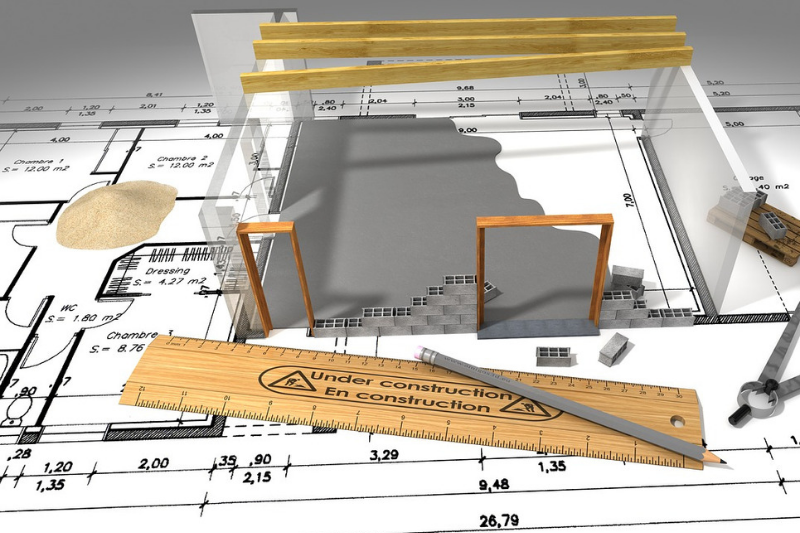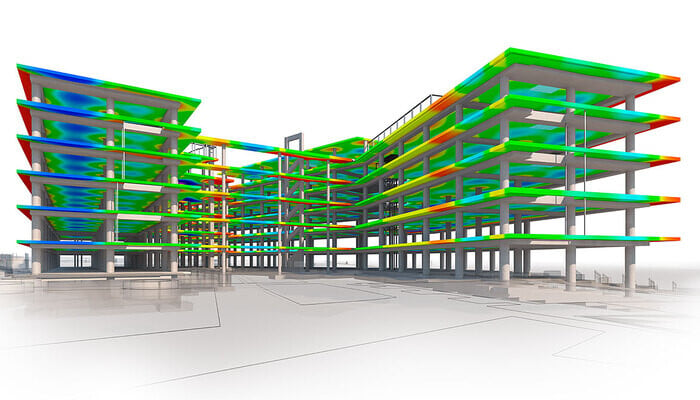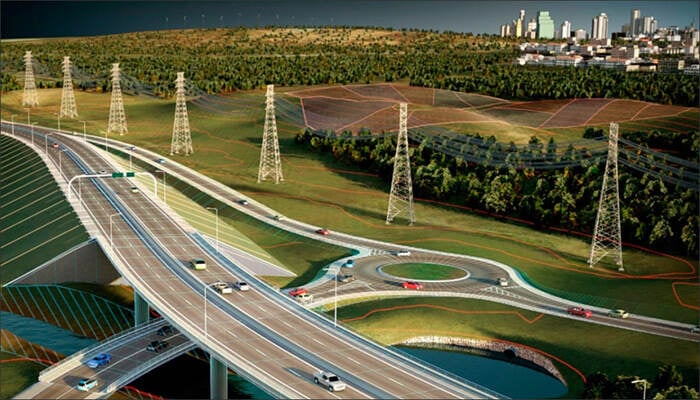A Comprehensive Guide on Structural Design in Civil Engineering

Table of Contents
Structural integrity is one of the critical elements when you design a large structure like a building, bridge, or dam. The last thing you would want is a flaw in your design that can potentially endanger human lives. Structural building design is the invisible backbone of the built environment, as it silently holds the structure in place while you carry on your day-to-day functions. But what role does structural design play in civil engineering? What is its purpose, and what are the structural design engineer careers that you can pursue? We shall answer all these questions in this comprehensive guide. Let’s start!
What is Structural Building Design in Civil Engineering?
After military engineering, civil engineering is the second-oldest engineering discipline. It deals with designing, constructing, and maintaining the built environment, specifically the public sector, such as roads, highways, dams, bridges, railways, and sewage and drainage systems.
Structural design or structural building design in civil engineering is a specialised area that includes methods and tools that help determine the safety and economical specifications of a building structure design. This ensures the planned structure is strong enough to hold the intended load. As a structural engineer, your role will be to analyse how the internal and external forces affect the structure. You will design structures with the most appropriate materials and reinforcements to meet all the requirements, from client needs to government regulations.
There is a strong relationship between architects and structural engineers - they both work hand-in-hand. Architects are tasked with designing buildings that are functional and visually appealing. On the other hand, structural engineers ensure the buildings they design are strong, durable, and safe. They collaborate and work together to design strong, durable, functional, and aesthetically appealing structures as per the client's requirements.
Key Components/Principles of Structural Design in Civil Engineering

Structural design in civil engineering
Structural design in civil engineering is a critical aspect of the overall designing and constructing process. It involves the planning and analysis of structural elements that resist and support the loads and forces imposed on a structure. The primary goal of a structural engineer is to ensure that a structure can withstand the various forces and loads during its service life. Take a look at the key components of structural design in civil engineering:
1. Load Analysis
Load analysis is an important element of structural design. It includes assessing the loads to ensure the designed structure can withstand different kinds of loads. Determining all the potential loads and forces the structure will experience, including dead loads (permanent weight, like the building’s own weight), live loads (temporary loads, like occupants and equipment), wind loads, and seismic loads, is essential.
2. Material Selection
The construction material must be selected based on the specific requirements and the expected loads. The type of material chosen, such as steel, wood, concrete, or composite, will affect the structural strength, durability, and project cost.
3. Structural Elements
Structural elements, such as foundations, beams, columns, walls, and slabs, also play a critical role in ensuring the stability and safety of a structure. All elements must be designed in a way that they efficiently distribute and transfer loads.
4. Structural Analysis
Mathematical models and software analyse the structural system and its behaviour under various loads and conditions. This helps determine if the structure meets safety and performance standards. Besides, all safety factors that account for uncertainties and unexpected conditions must be incorporated into the design. Ensuring that safety goes beyond the calculated load-carrying capacity is imperative.
5. Sustainability
Considering sustainability, energy efficiency, and overall environmental impact while designing a structure is crucial. Using sustainable materials and design practices can minimise the environmental footprint of the design.
What is the Structural Design Process?
In civil engineering, the design process involves a systematic series of steps to ensure that a building or infrastructure process is safe and capable of withstanding loads and forces. Structural design engineers work with architects, construction teams, and other professionals throughout the process to create a safe, functional, and aesthetic design. While the process mainly depends on the project’s complexity, the following are some general steps in the structural design process:
Step 1: Project Handling and Planning
In this step, you must design the project’s objectives, scope, and constraints. Establish the design criterion, including but not limited to building codes, standards, and performance requirements. You can also identify project stakeholders and their roles.
Step 2: Site Assessment
Conduct a thorough site survey to gather information about soil conditions, geological factors, and environmental considerations. Perform geotechnical studies and soil tests to assess the bearing capacity and stability of the site. Besides, you must consider the local climate changes, seismic activity, and other site-specific factors likely affecting the design.
Step 3: Load Analysis
This is a crucial step where you need to determine all the loads, including dead loads, live loads, wind loads, and seismic loads, that the structure will experience. Develop different load combinations to evaluate the most critical load scenario.
Step 4: Material Selection
Based on the findings in the above steps, determine the ideal material that will offer appropriate strength and durability and is within the project’s budget as well. Based on the project's requirements, you can choose steel frames, reinforced concrete, or timber.
Step 5: Preliminary Design
With all the information in hand, develop a conceptual design that outlines the overall layout and arrangement of structural elements. Also, determine initial dimensions, sizes, and member placements. Also, perform structural calculations to calculate the design’s feasibility.
Step 6: Structural Analysis
After the preliminary designs, create a detailed mathematical model of the structure using various engineering software like Revit and Sketchup. Analyse the structure’s behaviour under various load conditions to ensure it meets safety and performance standards. Lastly, make iterations, if required.
Step 7: Detailed Design
In this step, refine your design by specifying the precise dimensions, reinforcement details, and member sizes. Create a detailed design including structural elements like beams, columns, foundations, and connections.
Step 8: Construction Phase
Create a construction document mentioning drawings, specifications, materials, construction methods, and quality control requirements for the construction team. During the construction process, ensure the process adheres to the specifications. Conduct regular inspections and quality control checks.
Step 9: Post-Construction Evaluation
Once the construction is completed, conduct a final inspection to ensure the designed structure meets the specifications and safety standards. You can also document as-built conditions for future reference. Also, prepare a maintenance plan to ensure the long-term durability of the structure.
Purpose of Structural Design in Civil Engineering
In 1981, two suspended walkways in Hyatt Regency Hotel, Missouri, USA collapsed during a tea dance. The main reason for this collapse was a design flaw - a single set of threaded rod hangers supported both walkways; the design couldn’t withstand the weight, and it collapsed.
Thus, structural design analysis is crucial to avoid potential catastrophes and ensure that the design is stable, durable, and can withstand the expected load. Civil Engineers use structural design to determine the forces that can operate on a structure and choose the materials and reinforcements to strengthen the structure.
The purpose of structural design in civil engineering is multifaceted. Take a look at the key purposes below:
1. Built and Design
Structural building design directly affects the longevity and stability of a structure. Building a structure without considering its layout carries a risk of collapsing under its weight. Structural design helps determine key factors such as foundations, walls, floors, steep beams, material quality, etc., ensuring the built structure is safe and sound. Civil engineers essentially work on aesthetic design principles to design structures that withstand loads and pressure.
2. Safety and Compliance
Structural design analysis ensures that the structure complies with the necessary design codes and safety requirements. An in-depth analysis helps make informed decisions regarding the load a structure can support, the wind speed it can withstand, and its overall capability in other environmental conditions. For instance, structural design analysis could’ve helped avoid the Hyatt Regency Hotel catastrophe we discussed above.
3. Construction Material
The material used to construct a structure guarantees its operational usability and safety. Structural design helps choose the most appropriate resources and materials for construction to ensure the structure’s stability throughout its intended service life.
Advances in Structural Design
Structural design in civil engineering has continuously evolved over the years, driven by technology, engineering knowledge, and advancements in materials. These advances have shaped the construction industry, enabling civil engineers to create safer, sustainable, and innovative structures that meet the modern world’s demands. Read on to learn about some advances in structural design:
1. Computational Tools and Simulations
These tools allow you to create complex structures and simulate how they will respond to various loads and forces in real-time, enabling accurate and efficient structural analysis. Building Information Modelling is a multidisciplinary approach that helps create a digital representation of a building’s functional and physical characteristics. It has become quite a name in structural design. It allows efficient and more integrated design processes, enabling you to create 3D models and perform complex simulations.
2. Advanced Materials
The material used for construction also plays a crucial role in the overall longevity and stability of structures. Several high-performance concrete materials are available in the market, including self-heating concrete, that offer strength, durability, and resistance to environmental factors. Besides, sustainable options such as cross-laminated timber can also be used to maintain structural integrity.
3. Sustainability and Green Design
Sustainable and recycled materials are being used widely to reduce the environmental impact of constructing a structure. Engineers are also incorporating passive design strategies to reduce the carbon footprints of a building and maximise energy efficiency.
Types of Careers Involving Structural Design
While many say that structure designers are responsible for designing structures only, that’s not true! Careers in structural design offer a wide range of opportunities in civil engineering and architecture. Here are some common career paths involving structural design:
1. Civil Designer
As a civil designer, you will plan and draft 3D designs of various structures and construction projects - roads, bridges, and sewage and drainage systems. You will refer to topography surveys and maps for grading nearby structures and use the information for building projects. This role will require you to review drawings to ensure they are accurate and have obtained proper permits from government authorities.
2. Design Engineer
As a design engineer, your responsibilities will include researching and developing ideas for new designs and structures. You will create blueprints, plans, drawings, and 3D models on software. You will test prototypes for new designs and review the existing ones to identify the potential risks and problems. You will also implement solutions to overcome the existing issues. Additionally, your role will require estimating construction costs, overseeing the construction process, and collaborating with other stakeholders.
3. Materials Engineer
Materials engineer is expected to develop, process, test, and evaluate various materials to use while constructing a structure. Your role will involve offering technical advice on the construction material, overseeing quality control, and undertaking repairs and maintenance work. You might also need to supervise technical staff and coordinate with suppliers.
4. Structural Designer
As a structural designer, you will use your knowledge to create structural designs and digital models. While designing, you will consider the designs of electrical, plumbing, and sewage systems and the construction materials that the builder may use. You may also review and revise the drawings and models to meet the client's requirements. However, you must ensure that the final structure is safe and functional.
Top Structural Design Software You Can Use

Structural design software plays a critical role in the design, analysis, and simulation of various structural components. Several software tools help model and analyse structures under varied circumstances. The choice of software depends on factors like project type, specific design needs, and personal preference. However, many engineers use a combination of structural design software in civil engineering, depending on the requirement. Take a look at some software that you can use for structural design:
1. Revit
Revit is a BIM software developed by Autodesk. It integrates various aspects of building design, including structural components. With Revit, you can create 3D models that include structural details to analyse their performance under various loads and factors. Besides, you can also use Revit to create detailed drawings required for construction.
2. ArchiCAD
Developed by the Hungarian company Graphisoft, ArchiCAD is a BIM and 3D modelling software primarily used for building designs. It can also be used for civil and structural engineering applications. With ArchiCAD, you can detail and quantify the various structural components and visualise structures in 3D.
3. Abaqus
Developed by a 3D experience company, Dassault Systèmes, Abaqus is a Finite Element Software (FEA) that specialises in simulating complex nonlinear structural behaviour. This software is primarily used in aerospace, automotive, and industrial products as it can handle complex physical behaviours. You can use this software for advanced analysis and research as well.
4. Infraworks
Autodesk’s InfraWorks is a conceptual design software that provides you with real-world 3D context for infrastructure. You can use it to conceptualise design options for rail, public transport and water infrastructure projects. You can also use InfraWorks to analyse the traffic flow through intersections and conduct studies to visualise impact.
5. ETABS
Developed by CSA, ETABS (Extended Three-Dimensional Analysis of Building Systems) specialises in building analysis and design. You can use this software for designing high-rise and complex structures. Using this, you can also perform seismic analysis and design concrete and steel structures.
Also Checkout - 5 Best Courses To Learn ETABS!
Conclusion
Structural design plays a crucial role in the construction process as it merges scientific understanding with aesthetics and practical constraints. It ensures the structure's safety, stability, and longevity, directly impacting the safety of occupants and the public. The advancement in construction materials, computational tools, and sustainable practices has revolutionised the structural design field, enabling you to create safer and more efficient structures.
Besides, Building Information Modelling (BIM) skills are in high demand in civil engineering and can give you a highly rewarding career. If you also look forward to building your career in BIM, we’ve got you covered! Take your first step towards becoming a BIM expert with the BIM professional course for civil engineers offered by Novatr.
.png?width=720&height=158&name=BIM-C%20A%20(Course%20Banner).png)

 Thanks for connecting!
Thanks for connecting!

.png)
.png)




.jpg)

